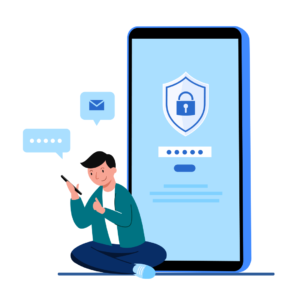No-code apps are becoming an increasingly important part of any business’s computing infrastructure. They allow business experts and non-programmers to develop powerful enterprise-strength applications.
That’s all to the good. But it also means that people who don’t have backgrounds in baking security into their apps will be writing important code. If you’re worried how to make sure that no-code apps are as secure as possible, though, there are plenty of things you can do.
The continually high demand for developers has also led to the growth of platforms to create applications in a way that minimizes coding. And the pandemic has accelerated no-code growth as companies push their digital transformations.
Yet the security and resilience of no-code platforms and the resulting applications continue to be questionable. While many types of security issues – such as command injection vulnerabilities and buffer overflows – are pushed off from the developer to the no-code platforms, the users of those platforms still need to focus on security.
Here are five tips that companies can ensure that their no-code applications are secure and resilient.
#Tip1: Revamp security training for a new team of app creators
The creators of No-Code applications are usually not typical developers. But business users who are building their own tools to satisfy a problem. Unfortunately, they have not taken a secure-coding or secure-application-design course. And companies need to recognize that lack of knowledge.
To build awareness, companies using no-code platforms need more security champions, within different populations. In addition to including security champions in any DevOps teams, where no-code and serveless technologies may be used as one component of an application. security champions need to be embedded among business users who are also no-code creators.

#Tip2: Know how far no-code guard rails to protect your applications
Because no-code development typically consists of picking components from a limited menu of software components created by the platform provider, or a third party, no-code creators can typically rely on the security measures enforced by the platform.
However, companies should understand the weaknesses of each platform and what is required to keep applications and data secure.
#Tip3: Platforms have different risks
Because no-code development typically consists of picking components from a limited menu of software components created by the platform provider, or a third party. no-code creators can typically rely on the security measures enforced by the platform.
However, companies should understand the weaknesses of each platform and what is required to keep applications and data secure.
While no-code platforms assume much of software risk. Companies need to be aware of the options for each platform to understand the potential attack surface area. Platforms that allow the addition of custom code, for example, introduce potential security problems along with user-defined functionality.
No-code ecosystems that allow third-party components may allow attackers to create malicious software.
#Tip4: Use the platform‘s security tools
Each platform offers a different set of logging and security tools. Companies should know their platform provider’s approach to security and what capabilities they need to use to secure their applications.
In many ways, security features and systems for no-code developers are more similar to those for business users than for high-code developers. ON AIR App Builder recommends security measures that resemble advice for cloud users: Adopt two-factor authentication, use a password manager for complex passwords and minimize reuse, and adopt measures to automate security features such as single sign on technology.
Knowing a platform security is one thing: actually using them is another. Make sure that every security capability built into the platform is used for every application written with it.
#Tip5: Resilience requires planning and design
In the end, companies need to include security in their broader planning. For no-code platforms, that means incorporating application-security testing and reporting into the development and management of no-code applications.
Below we are sharing five key focus areas for building in resilience to your software development. More testing automation, actionable results from testing, more frequent scans, breadth on coverage, and the scalability of your approach.
Companies need to include security in their broader planning. For no-code platforms, that means incorporating application-security testing and reporting into the development and management of no-code apps.
#Tip6: Build your team with the outcome in mind
No-code app will not replace traditional software development – at least, not anytime soon. However, developers are a good resource to tap to create good software practices that will result in resilient no code applications and as mentors for promising no-code developers.
translating their intentions in a concrete way is something Most business people are not capable of. Those who can solve problems, think logically, and incorporate requirements are the only one who will be successful – by adding security into their designs.
Securing No-Code Apps - 6 Helpful Tips
With ON AIR App Builder, you can have the ability to build custom solutions with security. So, now that you know the security tips that you have to keep in mind create your app today. Start now!


